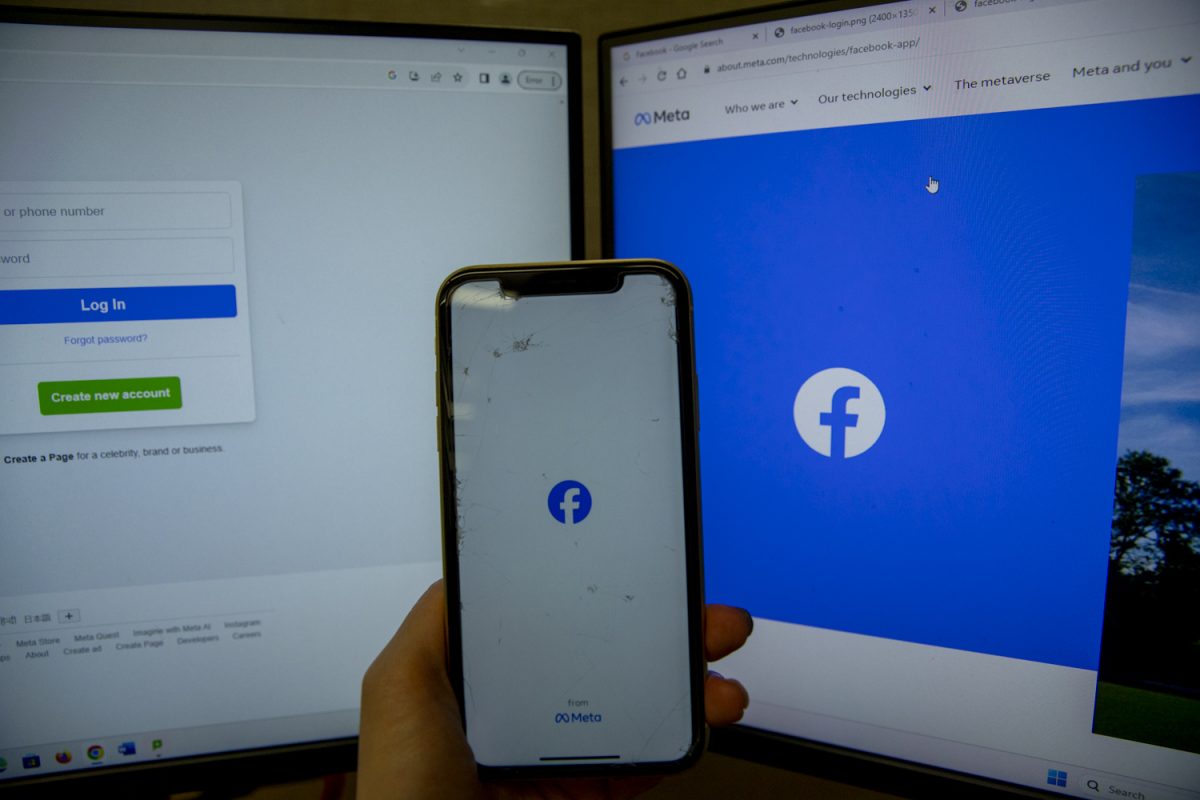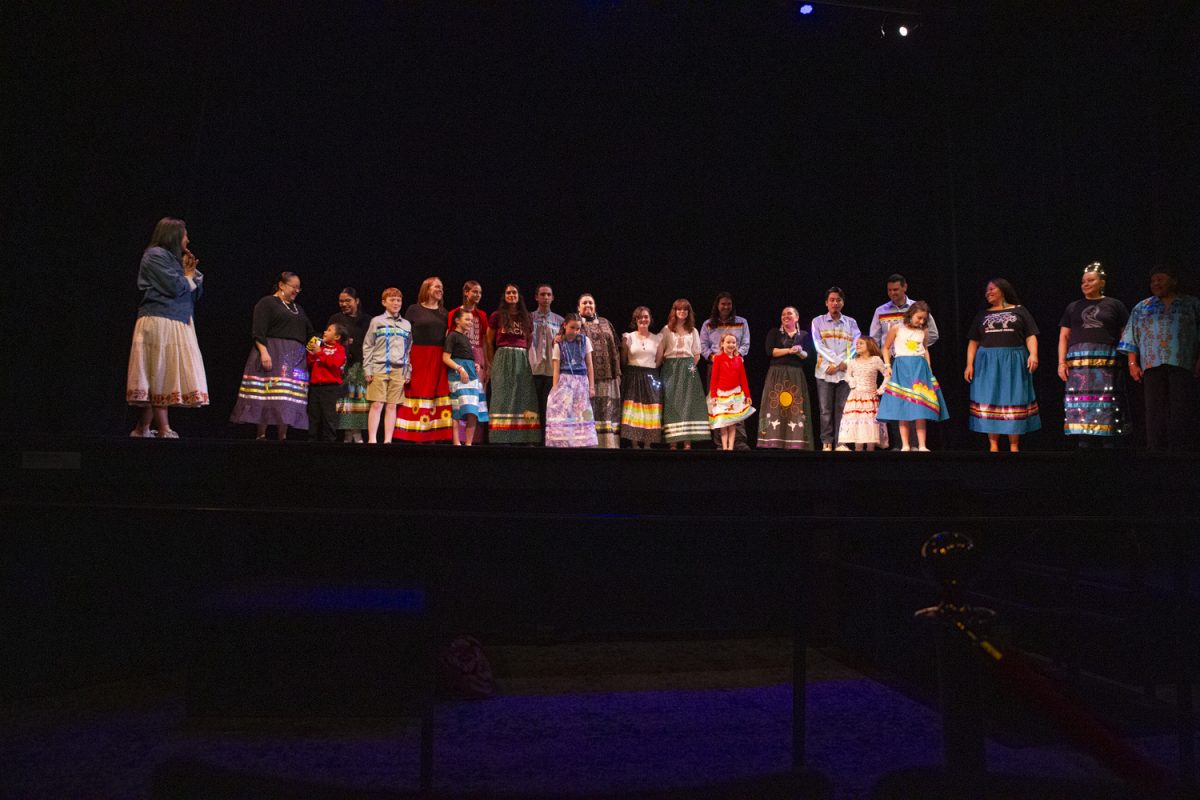Creepy — this is the word used in a 2006 article from The Daily Iowan to describe now-familiar features added to the 20-year-old college social media platform known as Facebook.
The features mentioned include the “News Feed” display, as well as a place for members to indicate personal details, such as who their friends are, what bands they like, and their current relationship status.
Though met with mixed reviews at the time of its release, these additions are now commonplace across most social media sites.
University of Iowa alum Tory Brecht embraced the new media in 1993, he was part of the first cohort of students to register for classes online.
“When I started college, there was very little online presence at all,” Brecht said. “I mean, you had to stand in line and physically go to classrooms to sign up for classes.”
In the 1990s, the internet was exciting and new. It was a limitless database of information accessible with just a few clicks of a button. It provided ease of use, and with it came new ways to quickly communicate with family and friends.
Brecht said he and his friends mainly communicated using online “bulletin board” services, where users could upload and download data and post on public message boards. At the time, this technology “blew people’s minds,” Brecht said.
Though these virtual bulletin boards were much simpler than later social networks, early internet culture began to take shape around them.
“You can kind of see, even with that very early internet culture, what was coming down the path. A lot of jokes, little memes, things like that. By the time I graduated, we could do some basic graphic stuff and the technology has advanced,” Brecht said.
As the Iowa City community began to reshape around the early internet, the concept of broad social networking sites took form.
“Social networks are a twenty-first-century phenomenon,” Kembrew McLeod, the UI department chair of communication studies, said.
McLeod has observed the rise of social media over the last few decades. Early sites, such as Friendster, or its successful competitor MySpace, were not as dynamic as their successors and lacked features that would become industry standards in later years — thanks to the success of Facebook.
On Feb. 4, 2004, a group of Harvard University students, spearheaded by CEO Mark Zuckerberg, developed Facebook. At the time, the site acted almost as a yearbook for their Ivy League peers, simply a way for college undergrads to identify and connect.
Though the platform’s origin story has been dramatized time and time again — including in the 2010 feature film “The Social Network” — Facebook’s conception still provides a unique point of comparison for modern day.
After its initial launch, thousands of new users joined TheFacebook every day. In 2005, TheFacebook simply became “Facebook” after the website domain Facebook.com was purchased for $200,000.
Because of the blooming popularity of the young site, two years after its debut, Facebook’s founders allowed any user with a valid college email address to join, including students at the UI.
“I remember I was in my sorority house, and we had just returned from winter break. We were talking about this ‘thing’ we had heard of. Somebody’s cousin somewhere had joined this social network,” Leslie Prideaux said, “They were talking about how cool this new network was. I was convinced it was a new dating site.”
Prideaux graduated from the UI in 2008 with bachelor’s degrees in English, history, and journalism. She now works as the Assistant Vice President at the UI Center for Advancement.
In the beginning, Facebook was, in a word, fun. A user profile only consisted of a single main photo and a few personal details. At first, the site lacked a way to upload multiple photos at once. It was only after its first year of existence that Facebook started allowing users to post photo albums.
“When people could share photos, that’s when FOMO [Fear of Missing Out] began. If you weren’t there, you still got to see how much fun people had,” Prideaux said. “It made people not want to miss out.”
By the fall of 2006, anyone over the age of 13 could become part of the Facebook community.
“That [addition] changed the dynamic of Facebook,” McLeod said.
As the platform became a social free-for-all, its users, the sum of which surpassed 1 billion in 2012, encompassed a wide spectrum that ranged from older generations attempting to reconnect with old friends and fellow family members to college students attempting to fit in with the status quo.
By the mid-2010s, Facebook’s reputation as a platform for teenagers and college students had faded. In 2023, Millennials and Generation X are the top Facebook users, according to Insider Intelligence.
“Now, I feel like there is a neutral perception about Facebook. People aren’t against Facebook, but it’s not the number one used social media platform for college students,” UI third-year Delaney Knutson said.
While Knutson does have her own Facebook account, she primarily uses it to follow her older family members. She also feels that a decent number of Iowa students have Facebook accounts to follow groups associated with their class, which are used to buy and sell tickets, search for roommates or apartments, and inform others on UI-related issues.
For the vast majority of Generation Z, Facebook has become strictly professional.
“I feel like Snapchat and Instagram are focused more toward younger populations. And I also feel like this age group joined right when they were started,” Knutson said.
Today’s platforms are constantly adapting, changing, and evolving their features. Facebook’s parent company, rebranded as Meta by Zuckerberg in 2021, seeks to connect people.
Many supporters of the “Metaverse” claim that a perfect version of the internet would be a single platform where people can create an entire digital identity for themselves. Even now, Meta is being geared toward making virtual reality meetings and collaborative spaces more mainstream.
Instagram, which was first developed in 2010, was purchased by Facebook in 2012, and has also been revitalized under Meta. It appealed to young viewers, mainly in aesthetic appearance, and continues to skew toward younger demographics. The platform is similar to Facebook in the sense that it allows members to share photos and videos, but differs in both layout and aesthetic appearance.
It is also common that people to use social media in their jobs and everyday life; many jobs require employees to maintain an online presence across multiple different platforms, Prideaux said.
“You have to recognize the time people take with their social media presence. When they get into a real-life scenario, they don’t have that luxury which can be challenging for some people,” Prideaux said. “I think there are powers of good and evil with that.”
Social media can foster immediate connections with strangers and often removes barriers for those who may have social anxiety. People can shape their words and curate their outward appearance online.
“I always embrace the aspects of technology and I enjoy the social aspect, but I do worry about our faces being on the screens and our brains being constantly engaged,” Brecht said. “One piece of advice: give yourself a day-long break from your phone and encourage other people to do that, too. Your brain will feel different.”
Editor’s Note: Brecht is a former member of the The Daily Iowan staff.












